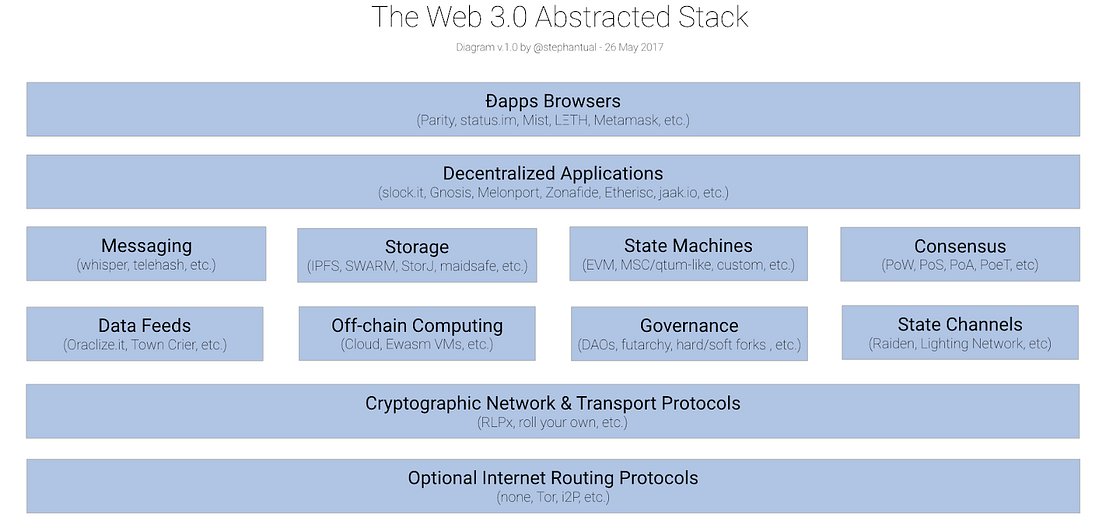
While Blockchain technology provides trustless solutions, transparency, among other solutions, it does have limitations. Among the limitations of Blockchain are interoperability, scalability, security, as well as privacy concerns, sometimes. In affirmation of the above limitations, the Token Economy agreed by quoting the trilemma. The trilemma maintained that although several Blockchains are working on solving the challenges, “the Blockchain can achieve only two of the following three properties, simultaneously.”
However, several Blockchain projects are striving to bring solutions. A few of them are Polkadot, Cosmos, NEO 3.0, Hyperledger Cactus, among others. Nonetheless, this article discusses Polkadot: solutions, architecture, and other functionalities.
In the simplest definition, Polkadot is an open-source Blockchain, enabling decentralized internet. Polkadot, founded by Parity, the founding team of Ethereum client was seeking to achieve a decentralized internet- Web 3.0. The team found out that a Web 3.0 concept can come live by addressing the various scalability, interoperability, and security limitations of Blockchain.
Although Blockchain technology pioneered the decentralization concept, yet they could not interact with one another. Therefore, Polkadot is connecting specialized Blockchains to communicate with each other in a secure, trust-free environment.
Polkadot enables independent Blockchains to connect, exchange information regardless of the kind of Blockchain provided a set of security, governance, and architectural principles are achieved. For interoperability to occur between Polkadot Blockchain and other Blockchains, the following criteria among others must be met:
Because Polkadot Blockchain enables decentralized internet, meanwhile, do note that the limitations of Web 1.0 and Web 2.0 resulted in conceptualizing Web 3.0. However, it will be needful to intimate you with the various phases of the internet that preceded Web 3.0. The internet brought about virtual data, identities, and many innovations. In the early 2000s, we had Web 1.0 that is limited to read-only, static web pages. Today, the internet powers social media and businesses. Nowadays, creators contribute, publish, and develop dynamic, interactive web pages using Web 2.0.
Web 2.0 makes the original web more interactive and robust. However, it has data, privacy, and trust concerns. On the other hand, Web 3.0 brings a new paradigm of interactive internet that changes the way developers create websites and applications, control data, privacy, and trust.

Figure 1; Web 3.0
Consequently, Web 3.0 is named decentralized internet. Contrary to Web 2.0, it gives users the control of data, privacy, and trust. Therefore, Polkadot is leveraging Blockchain and emerging technologies to achieve decentralized internet. Polkadot establishes the governance and upgradeability criteria of decentralized applications that make Web 3.0.
Also read: Introduction to The Graph Network [Part-1]
The network operates a heterogeneous multi-chain Blockchain that connects other Blockchains. It comprises the main Blockchain, and subsidiary Blockchains called Relay chains and Parachains, respectively.
Blockchains are connected in parallel to the network as Parachains to access the transactions and network’s security. On the other hand, the Relay chain, which connects the Parachain standardizes transactions and security such that other Blockchains can understand or create interconnectivity. Participants on the network reach consensus and security by staking roles.
Polkadot solves Blockchain interoperability, scalability, and shared security imitations. Therefore, it operates a heterogeneous multi-chain architecture to achieve its purpose. It features three broad architectures and participants’ roles, named Parachains, Relay chain, Shared state architectural designs and Validators, Nominators, Collators, and Fishermen roles, respectively.

For a better understanding, let’s start with the three architectural design:
Parachains, often called parallelizable chains, are simpler forms of Blockchain, attached to a Relay chain to perform multiple transactions without collusion. Similar to Cosmos, Polkadot uses a Relay chain to establish interoperability between Blockchain. However, Polkadot defers in the manner of implementation, connection, and shared security.
Since Polkadot is ideally built to interconnect with other Blockchains, the Relay chain is the central connector that connects other Blockchains in the network. Consequently, the Relay chain is the main Blockchain, while Parachains, linked by Bridges, are smaller Blockchains, which can be in the form of DApps.
The Polkadot network is a multi-chain Proof of Stake and hosts a native token called DoT. With DoT, Validators stake on the Relay chain. As such, the DoT provides the governance and a game-theoretical incentive for the token holders to behave in honest ways. The Relay Chain comprises a small number of transaction types that include ways to interact with the governance mechanism, Parachain auctions, and participating in NPoS.
Polkadot ensures that the Relay chain and all connecting Parachains have a shared state.
The shared state establishes trust assumptions in the network. Consequently, the shared state allows Polkadot Parachains of the Relay chain Validator to be set in the network. These, in turn, increase security within the network.
Let’s explain how Polkadot works using a Participant role perspective concerning the staking and associated roles. Polkadot operates a Proof of Stake consensus mechanism. Hence, participants own and stake using DoT tokens. The participating roles in the network include block verification and non-block verification roles. However, below are the background of the roles:

They block verification based participants that have the most critical role in the network. It is the role of Validators to secure the Relay chain by way of staking DoTs.
Validators perform the following function in the Polkadot network:
Nominators are participants who hold stake on the network but secures the Relay Chain by selecting trustworthy Validators. They achieve consensus by contributing their bonds during Validator selection.
Unlike the Validator role, Nominators don’t need to run 24/7 nodes to earn DoTs but can simply do that by selecting Validators. However, as Nominators, you could lose or gain depending on how trustworthy your Validators are. Consequently, it encourages parties to select trustworthy Validators.
The Collators work on the Parachain level, unlike the Validators and Nominators. They stake to secure the network by collecting Parachain transactions from users and producing state transition proofs for validators. Therefore earn incentives for every proof they show. Upon gathering the transactions from the Parachain, they produce and send proof along with an unsealed block to the appropriate Validator. Consequently, the help in reaching consensus as well as maintaining the Parachain.
They are non block verification participants that report malicious behavior on the network to Validators. Fishermen within the network are often incentive as bounty hunters for proving that a bonded party acts maliciously. Although they post bonds to the network, their bonds are nearly insignificant and can be withdrawn anytime. However, their bonds help to prevent Sybil attacks.
Currently, Polkadot is one of the projects pioneering decentralized internet. It is similar to Cosmos except for some implementation differences. Consequently, it has a multi-chain: Relay chain, Parachain, and Bridges that help the Parachain interconnect.
Also read about proof of transfer in our article
Need help with building your Blockchain project? Connect with Xord at https://https://xord.solutions/contact/ and get moving!
Share:
